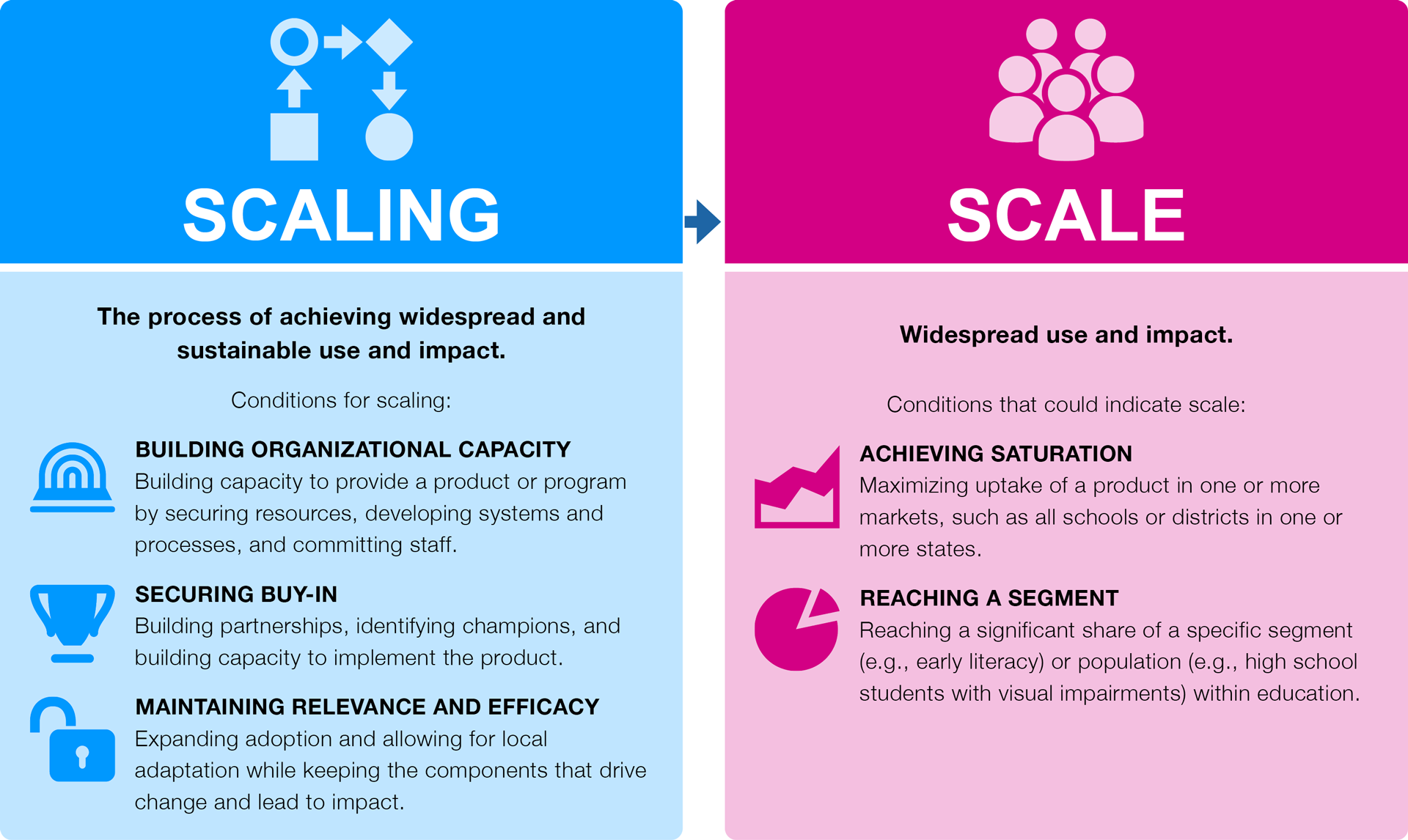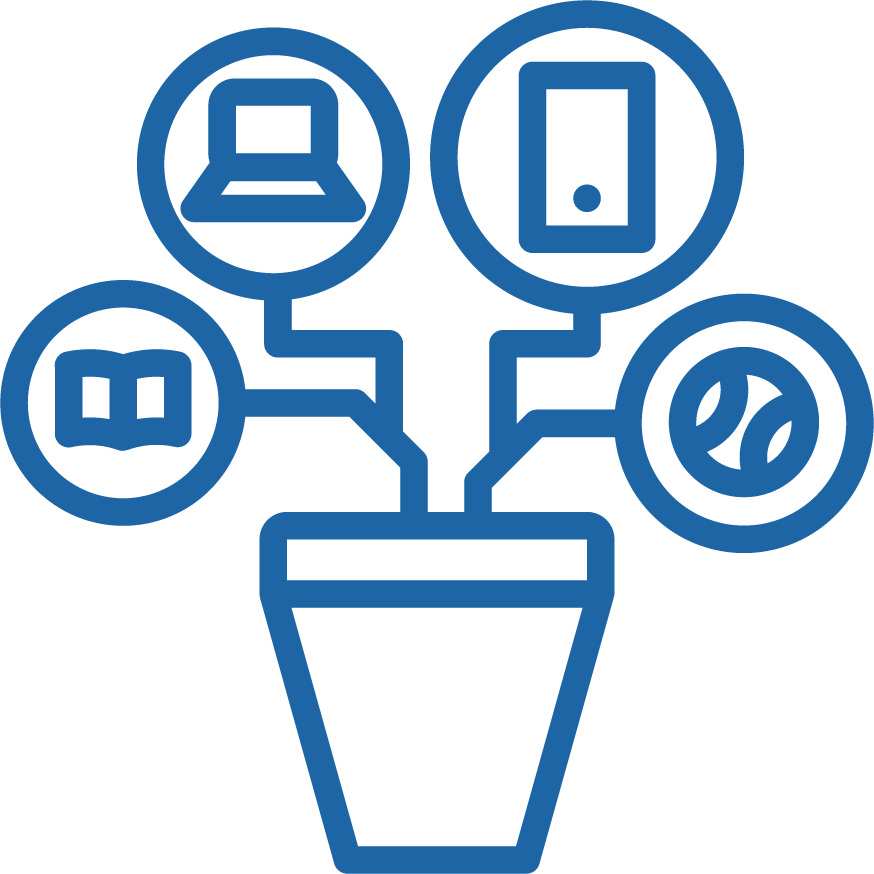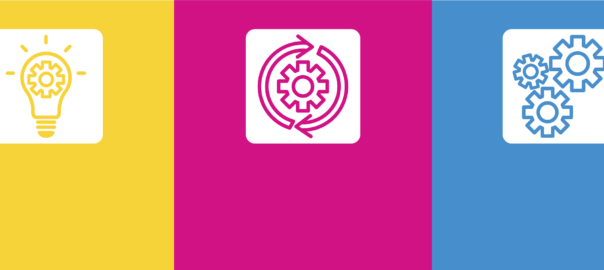- Welcome
- Approach
- Invent
- Apply
- Transition
- Glossary
| Scaling Educational Products | Invent-Apply-Transition |
|---|
Scaling Educational Products
Achieving scale is the important milestone of widespread reach and use of an educational product.
This toolkit focuses on scaling, or the multifaceted process of achieving widespread and sustainable use and impact. The scaling process for an educational product may include adoption, replication, adaptation, and reinvention1, rather than off-the-shelf implementation.
The graphic below provides working definitions and describes the conditions for the scale and scaling of educational products.

Helping evidence-based educational products reach scale has the potential to accelerate learning and enhance outcomes for all learners. However, educational systems represent a complex, multi-level, inter-related, and context-dependent market in which access is governed by layers of policy, history, politics, resources, and capacity. Therefore, the approach to scaling an educational product is nuanced, full of trade-offs, and not guided by one-right way or path. This toolkit offers a framework and resources for considering these complexities and activities to enhance the potential for scale.

LEARN more
What does it mean to “scale” an educational product? A growing body of research on scaling educational products calls for a more nuanced definition that speaks to the unique context of educational settings. In this blog post, we highlight three promising ideas from this research for thinking about scale in educational contexts.
Maximizing impact and navigating trade-offs when scaling education innovations: A video conversation between Brad Olsen and Larry Cooley. This blog post from the Brookings Institute includes a video conversation focused on scaling impact in education and common scaling trade-offs.

